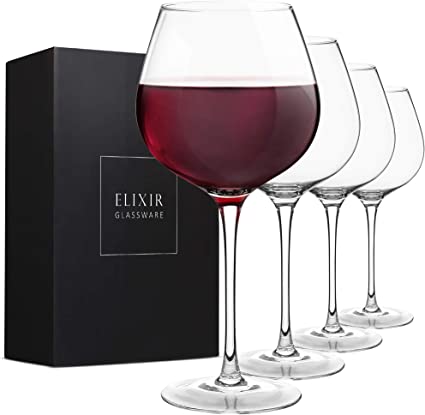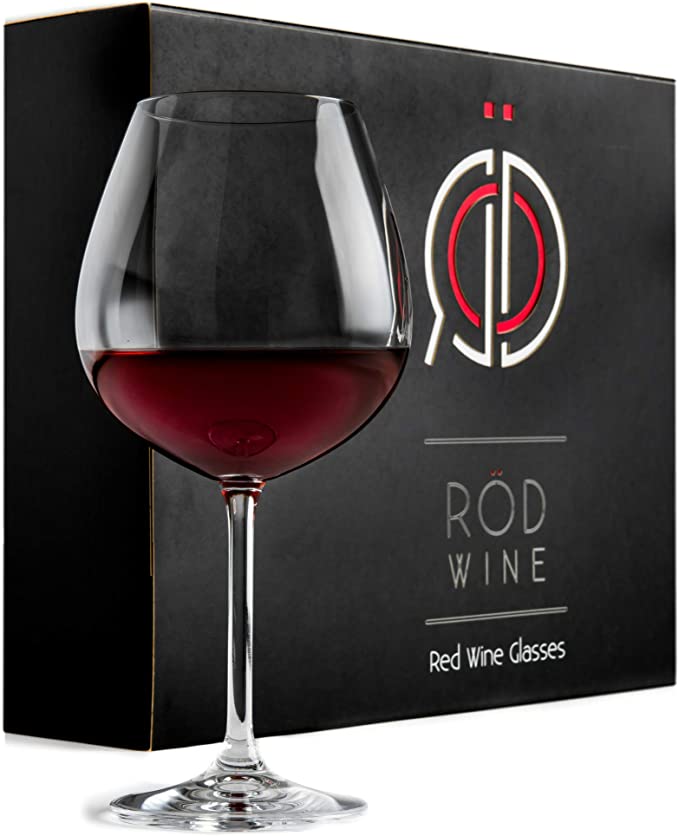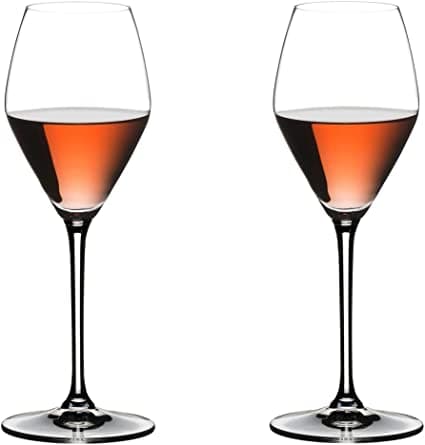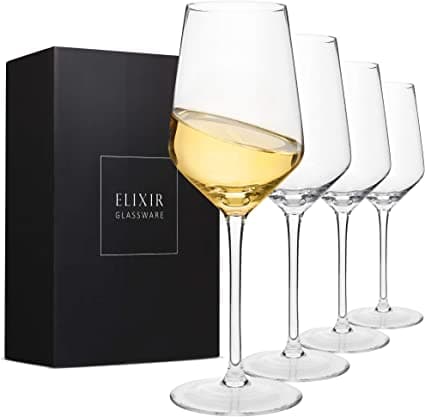Discover all the brands and references of wine glasses selected by chefs, sommeliers, bartenders and waiters who work in starred gastronomic restaurants. Bestwine – Online allows you to find and buy in a few clicks the wine glasses considered as the most aesthetic and the most efficient to taste the best wines. Wine is a fine alcoholic beverage that needs to be enjoyed in containers whose ergonomics and materials are designed to enhance the beverage they contain. The shape and size of the different parts of the wine glass influence the perception of the visual, taste and aroma of the wine glass. You can rely on the expertise of the world’s most renowned sommeliers to help you choose the perfect wine glass that will enhance your vintage wines.

Find the best wine glasses
Discover the wine glasses chosen by chefs, sommeliers and bartenders of starred gastronomic restaurants. A selection by credible and legitimate professionals to help you find the perfect wine glass.
Buy the best wine glasses
We guide you to the most interesting commercial and promotional offers online. You can buy the best wine glasses with confidence thanks to a reliable and impartial reference.

The best wine glasses
With Bestwine – Online, the reference for the best wine glasses:
- Enjoy a wine in the right wine glass to enhance its visual appearance, smell and taste.
- Offer a wine glass or a set of exceptional wine glasses.
- Enrich your tableware with prestigious wine glasses.
- Discover all the information you need to know about wine glasses and their specificities in order to easily choose your wine glass.

Riedel Elixir wine glass
Wine glass brand: Riedel
Type of wine glass: tulip wine glass

Wine glass Rod Wine
Wine glass brand: Rod Wine
Type of wine glass : tulip wine glass

Rosé glass
Brand of the rosé glass: Riedel

White wine glass
Brand of the white wine glass : Riedel
Best wine glass brands
Refer to the opinions of chefs, sommeliers and bartenders from starred gourmet restaurants around the world to discover the best wine glass brands in the world. A classification and comparison of wine glasses selected in starred gastronomic restaurants by experts in the field of high gastronomy.
| Reference of the wine glass | Wine glass brand | Capacity of the wine glass | Material of the wine glass | Type of wine glass |
|---|---|---|---|---|
| Elixir wine glass | Riedel | 67 cl | Crystal | Tulip wine glass |
| Rod Wine glass | Rod Wine | 65 cl | Cristal | Tulip wine glass |
The wine glass
Definition of a wine glass: a wine glass is a container for serving, observing, smelling, tasting and drinking. There are three parts to the wine glass: the chalice, the stem and the base. The wine glass can contain red wine, white wine, rosé wine or yellow wine. The wine glass can be made of glass or crystal. In the past, the wine glass was made in three parts and then assembled. Nowadays, glassmaking techniques allow the wine glass to be made in one piece. Wine glasses have been made by man since the 14th century. The first creations of wine glasses are produced in Murano in Italy where glass craftsmen work. It is from the 19th century that the bourgeoisie massively equips itself with services of wine glasses.
We distinguish several subparts for each part of the wine glass.
The chalice, also called container or goblet, is the upper part of the wine glass. It is this part which is assimilated to the term “wine balloon” since its shape is generally round or curved
The chalice is composed of the “buvant” which corresponds to the contour of the wine glass. It is also known as the opening or rim more familiarly. It is the highest extremity of the wine glass on which the lips of the drinker come to rest to pour the wine into his mouth. The thinner the rim, the better the wine glass is considered to be. However, a too thin drinking glass would be too fragile, so it is necessary to find the right balance
The chalice consists of a part called the chimney. The chimney is the upper part of the glass under the rim. The chimney is so called because it is a part whose diameter narrows progressively to the rim. The tighter the neck and the rim, the more concentrated the wine’s aromas, scents and essences will be and the easier they will be to analyze. However, a chimney and a lip that are too tight can prevent the wine from being properly aerated. This is why it is important to choose a glass and a chimney that are tight enough to concentrate the aromas and wide enough to allow good aeration of the beverage within the bottle
Then, the shoulder of the wine glass is the widest part at the bottom of the chalice. A wine glass shoulder can be more or less wide, more or less rounded, more or less angular and more or less curved. A curved and rounded shoulder is the norm for a wine glass. The cylindrical shape allows the wine to be better viewed and rotated to observe it and promote the development of its aromas. Also, the curved shape of the wine glass allows for a better reception of the beverage when it is poured, which avoids possible spills of wine out of the container, which could be the case if the bottom of the wine glass were flat. Thanks to the curved shape, the wine glass hugs the liquid that is poured into it, helping it to breathe when in contact with the glass and the air
The chalice ends in its lowest part with what is called the parison. The gob is what is considered the bottom of the glass. A glass bottom with a large diameter favors the oxygenation of the wine. The parison also allows the wine to be observed with a reduced concentration compared to the other parts of the chalice.
The stem, foot or leg of the wine glass is the junction between the chalice and the base of the glass. It is the thinnest, longest part of the entire wine glass. The part that connects the goblet and the top of the stem is called the knob. The stem of the wine glass can be thicker or thinner. The stem of the wine glass must be thin enough to enhance its aesthetic appearance but thick enough to maintain its strength. This is also the case for the chalice, which must be thin but thick enough to resist physical stress.
The base of the wine glass is the lowest part of the whole wine glass. The base of the wine glass is also called the base. Flat or conical, the base of the wine glass must allow the container to stabilize on the surface where it is placed. The base of the wine glass must be wide enough to stabilize the entire container.
Choosing a wine glass
The wine glass is most often translucent and colorless. The colorless aspect of the wine glass allows for better observation of the wine it contains.
Each wine glass has its own atypical chalice (with its own shape, its own spout, its own shoulder and its own gob), its own stem and its own base. Each element has its own characteristics in terms of materials, size, diameter and weight shape.
The wine glasses selected by sommeliers are the right size, shape, materials and dimensions. That is, the diameter of the different parts of the chalice (rim, chimney, shoulder and goblet) is the ideal size to allow the wine to express its full potential.
A good wine glass can be made of glass or crystal. Crystal is certainly a fine, high-end component that has advantages over glass such as light refraction (crystal is brighter than glass) and strength (crystal, contrary to popular belief, is stronger than glass). Crystal wine glasses are however heavier than glass and more expensive. There is not much difference between crystal and glass wine glasses. That’s why the best wine glasses can be made of glass or crystal. These materials also have the advantage that they do not affect the taste of the liquids they touch.
Regarding the size of the wine glass, there is not necessarily a better size than another. The most important thing is the diameter of the glass.
There is a standard glass whose design criteria have been defined by the INAO (National Institute of Origin and Quality) since 1971.
The wine glasses used during tastings have the following dimensions:
- Diameter of the rim of the wine glass: 46 mm
- Height of the chalice of the wine glass: 100 mm
- Height of the foot of the wine glass: 55 mm
- Wine glass shoulder diameter: 65 mm
- Wine glass foot diameter: 9 mm
- Wine glass base diameter: 65 mm
The total volume of a tasting wine glass is between 210 ml and 225 ml. Again, the volume of a wine glass is of little importance. Tasting wine glasses are considered by some wine tasting experts, sommeliers and producers to be the perfect glass for tasting a wine and analyzing its quality. However, wine glasses are not table glasses. They are glasses used only to taste a wine and not to drink it as it is the case during a meal. Thus, a tasting wine glass cannot be used as a table wine glass. The purpose of this ergonomic design for tasting glasses is to unify the containers used by the juries who taste the wines during competitions so that the verdict is based on similar test bases. The ergonomics of the official wine tasting glass also has some disadvantages, such as the small diameter of its mouthpiece and the small size of its stem.
When it comes to the volume of a classic wine glass, there is no fair standard.
It is possible to choose an aesthetically original glass. However, it is important to keep in mind that a wine glass should preferably not have patterns carved into the glass or printed on the glass. Indeed, this can be detrimental to the visual. The wine glass should be relatively neutral aesthetically. Indeed, the wine glass must be a tool that enhances the beverage. The wine glass should not take precedence over the wine. There are personalized wine glasses, but here again, the aesthetic aspect of the glass can take precedence over the wine. During the 20th century Claus Riedel, creator of the Riedel glass brand, demonstrated the impact of the wine glass on the quality of the beverage. As a result of his findings, he created translucent and colorless wine glasses, unlike the traditional designs of the time, which were colored and decorated with patterns.
Choosing a good wine glass also means selecting a quality material. For example, a quality glass or crystal will be less likely to scratch over time. Likewise, a high quality wine glass will be easier to clean and maintain over the long term without altering its qualities.
There are several types of wine glasses:
- Tulip wine glass: this is a homogeneously shaped wine glass with a closed rim in which Bordeaux wines are served. The more closed rim allows to concentrate the aromas for the nose as well as for the mouth.
- Lyre wine glass: the lyre wine glass has a more open rim. The wine flows more fully in the mouth. The lyre wine glass is suitable for wines with low tannin like Burgundy wines.
There is a classification of wine glasses by beverage:
- Port wine glass: wine glass with medium chalice, stem and small base.
- Bordeaux wine glass (tulip glass): large chalice, large stem and large base.
- Chardonnay wine glass: large medium-sized chalice, large stem and medium base.
- Sauvignon wine glass: medium-sized calyx with an elongated shape and medium base.
- Vintage Champagne wine glass: very wide and small calyx with a medium stem and a medium base.
- Rosé wine glass : medium size chalice with a long chimney of reduced size with a medium stem and a medium base.
- Sauterne wine glass: medium-sized chalice with a high shoulder, a small chimney, a medium stem and a medium base.
- Burgundy wine glass (lyre glass): large and wide chalice, medium stem and large base.
- Champagne glass (tulip champagne glass or champagne flute): elongated chalice, medium stem and small base.
- Champagne glass: very wide and shallow chalice, small stem and base.
Traditional champagne glasses or champagne flutes have an elongated shape allowing the glass to contain the carbon dioxide emulsions when the sparkling wine is poured. The elongated aspect of the chalice also allows to enhance the bubbles of the champagne which are directed on the surface of the flute.
Consumption of wine by the glass
Wine by the glass is drunk at room temperature. In the art of the table, the wine is poured to the third of the glass. The wine is poured up to the widest part of the chalice, i.e. the shoulder of the glass. The wine glass should be at room temperature, not too hot (when it comes out of the dishwasher), and not too cold, so as not to create a thermal shock that could harm the taste of the wine. The wine glass must be held by the stem and base to avoid dirtying and heating the chalice. This can affect the visual appearance and taste of the wine. The fineness of the chalice should allow the consistency of the wine to be observed. This can be seen when the wine beads on the rim of the wine glass. The wine glass should be tilted almost horizontally in order to smell and breathe the wine. The wine glass allows you to observe the color of the wine. The wine glass allows to smell the liquid to better assimilate its taste. The wine glass must allow to drink the content to distinguish the originality of its aromas, its flavors, its taste and its strength of character.
The wine glass must allow a good oxygenation of the alcoholic drink to let its assets express themselves. A wine decanter can be complementary to let the beverage breathe but a good wine glass allows a good breathing naturally. The wine glass must allow the contents to evolve over the minutes.
The wine glass must be clean and free of impurities so as not to spoil the wine visually or taste-wise. The fineness of the glass or crystal is also a criterion that influences the weight of the wine glass. A light wine glass is easier to handle.
Wine glasses can be used at all stages of the meal, from the aperitif to the dessert, including the starter and the main course.
In tableware, glasses are arranged according to their size, in descending order, from left to right: the water glass, one or two red wine glasses, the white wine glasses or the champagne flute. Red wine glasses have a different shape depending on the type of beverage (Burgundy, Pinot, Bordeaux…), and are filled halfway.
Wine is an alcoholic beverage obtained by the fermentation of grapes, the fruit of the vine. Wine is made from grapes of different varieties, with different grape varieties, different terroirs, and different production methods. To distinguish the authenticity of a good wine, it is necessary to drink it in a good wine glass. The sommeliers of starred gastronomic restaurants are constantly on the lookout for the best vintages and the most beautiful and efficient wine glasses. In order to find the best wine glasses, sommeliers of starred gastronomic restaurants go to glass craftsmen and glassmakers all over the world who make the most elegant wine glasses. Via Bestwine – Online, they pass on their experience, expertise, know-how and passion.
An authentic classification and comparison to select your wine glasses
Time needed: 5 minutes
Choose the best wine glass for you:
- Select one or more selection criteria for your wine glass according to your preferences.
- Rank the wine glasses according to your selection criteria.
- Select your favorite wine glass.
- Buy online one of the best wine glasses at the best price.
- Receive or offer one of the best wine glasses to enjoy your favorite wine!
The selection of high end wine glasses
Bestwine – Online references wine glasses found on the tables of the most famous and recognized gastronomic restaurants around the world. These wine glasses have been acclaimed by the greatest chefs and sommeliers in the world of gastronomy, who are themselves highly regarded by the critics. Only the wine glasses sold online are presented to you so that you can buy them easily.
The repository of the best wine glasses is updated daily by integrating new references that are placed on the tables of gourmet restaurants. We also update the commercial and promotional offers to allow you to buy online a quality wine glass at the best price. We are committed to presenting only wine glasses from the tables of award-winning gourmet restaurants.
Chefs, sommeliers, bartenders and waiters of gourmet restaurants are the guarantors of the excellence of fine dining by offering the best products, food and beverages served in the most beautiful glasses in their restaurants. Naturally, the chefs, sommeliers and waiters of the finest gourmet restaurants have the finest wine glasses on their tables.
Bestwine – Online is committed to referencing the best wine glasses and guiding you to the most attractive online commercial offers so that you can buy them at the best price. The best wine glass plan for a good deal to find and buy a wine glass at the best value!
Menu

